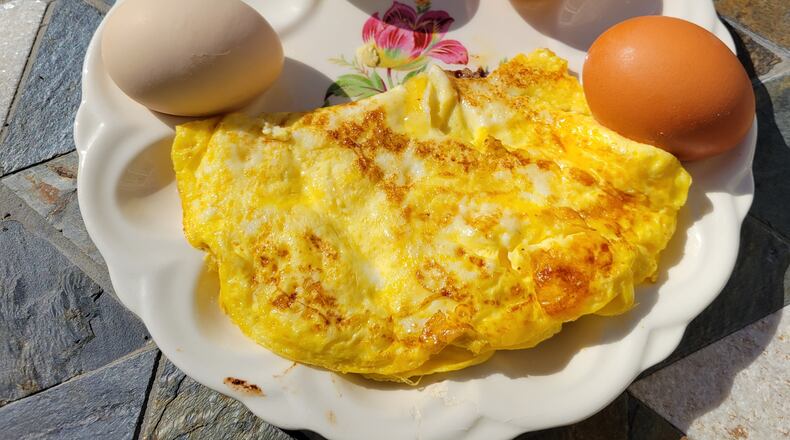The Co-op’s mainstay egg supplier for many years now has been Dale Filbrun’s Morning Sun Farms. The eggs, as well as everything produced on the farm, are certified organic. The Filbrun eggs have a dark rich brown color.
A carton of eggs from Craig Harkrider’s Stoney Hedgerow Farm is a special treat, because the dozen eggs will have multiple colors. Dark brown, bright blue, pale yellow and tan. The reason is straightforward: Craig has different breeds of hens on his farm.
I think these are the breeds of hens associated with the different colors of eggs. But don’t quote me on this.
The blue eggs come from Ameraucana hens, developed in the United States in the 1970s, from chickens brought here from Chile. The dark brown eggs may be sourced from Golden Comet chickens described by Happychickencoop.com as “a personable and curious hen, very mellow and doesn’t mind being picked up by folks.”
The light brown eggs may be coming from Rhode Island Red hens. It’s the official state bird of Rhode Island, where it was developed in the late nineteenth century, by cross-breeding birds of Asian and Italian origins.
I recently hung around Craig’s table at the Oxford Farmers Market asking shoppers which color eggs are their favorites. Most folks have preferences. Ken Grabach prefers the blue ones, whereas Charles Ganelin prefers the pale tan ones. Another shopper was adamant that the dark brown ones are the best. Yet another shopper responded that in her household only she is permitted to have the blue ones.
I asked Craig whether he packed the dozen eggs randomly or took notice of colors. He said that he tries to make sure that each carton has at least two blue eggs.
Given the popularity of the blue eggs, I asked Craig why not more than just two or three? Those hens simply choose to lay fewer eggs than the other breeds.
Craig told me last year that his chickens are very happy. And happy hens lay more and better tasting eggs.
How does Craig know that the chickens are happy? His answer: because they are chatting away with each other. In what language? Chicken talk.
Craig, I asked, do you speak chicken talk? No, but I understand what they are saying, and they say they are happy. What are they happy about? They’ve been out in the fields mowing the grass.
So pick up a carton of colorful local eggs. No need to dye them for Easter.
MOON Co-op Grocery is Oxford’s consumer-owned full-service grocery featuring natural, local, organic, sustainable and Earth-friendly products. MOON Co-op, located at 516 S. Locust St. in Oxford, is open to the public every day. Check it out online at mooncoop.coop.
About the Author
